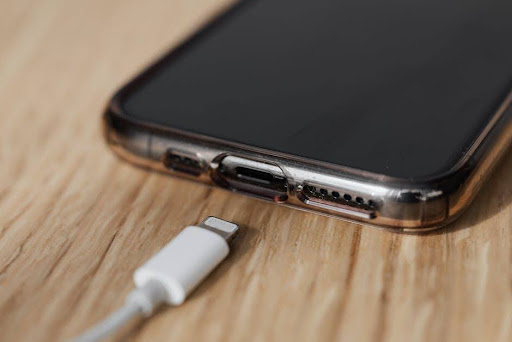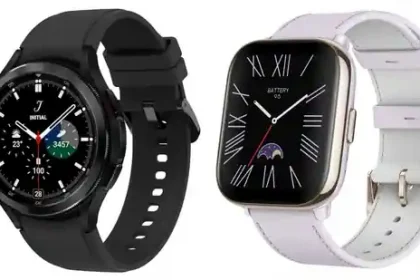Smartphone charging technology has come a long way since the early days of mobile phones. The way we power up our devices has changed significantly.
Innovations have made charging faster, more efficient, and more convenient. As smartphones became essential to daily life, so did the need for better charging solutions.
Let’s explore the advancements in smartphone charging technology.
The Era of Basic Wired Charging
Initially, smartphones relied on basic wired chargers. These phone chargers provided a slow and steady flow of power. They typically took several hours to fully charge a device. Despite being simple, they were reliable.
People carried them everywhere to stay connected. This was the foundation for future improvements. Early chargers had bulky designs, making them less portable. They were often prone to wear and tear with frequent use.
Introduction of Standardized Ports
Standardized charging ports became a game-changer. They allowed users to use one charger for multiple devices. This reduced electronic waste and made life easier for users.
As a result, travel became simpler with fewer cables. The development of universal connectors paved the way for industry growth. Standard ports also made repairs easier and more affordable. They ensured compatibility across different brands and models.
The Rise of Fast Charging
Fast charging technology was a breakthrough. It significantly reduced charging times. Users no longer had to wait hours to power up their phones. This technology offered a quick boost when time was limited.
It became a selling point for many smartphones. Fast charging transformed user habits. As demand grew, fast chargers became more accessible. Safety features were also added to protect batteries.
Wireless Charging Enters the Scene
Wireless charging changed the game entirely. It eliminated the need for physical smartphone cables. Users could simply place their smartphones on a charging pad. This convenience made wireless charging popular.
However, early versions were slower than traditional methods. Improvements soon followed. Wireless charging pads became more affordable and widely available. They also offered cleaner, cable-free desk setups.
Advancements in Wireless Technology
Over time, wireless charging became faster and more efficient. Charging pads also became more widely available. Integration into furniture and vehicles became common. This seamless experience was appealing to users.
Wireless technology became a preferred option for many. It symbolized modern convenience. New materials improved energy transfer efficiency. Multiple devices could be charged simultaneously.
Magnetic Charging Solutions
Magnetic charging brought additional benefits. It ensured a secure connection for efficient charging. Users no longer needed to align their devices perfectly. The magnetic attachment simplified the process.
This innovation improved wireless charging reliability. It also became a stylish solution. Magnetic systems reduced wear on charging ports. They also offered better durability for frequent use.
The Move Towards Smaller Chargers
Charging technology started becoming more compact. Smaller chargers were easier to carry. Despite their size, they retained powerful capabilities. This was ideal for users on the go.
Space-saving designs became the norm. Portable chargers became must-have accessories. Compact chargers also improved energy efficiency. They offered sleek designs that matched modern aesthetics.
Sustainability in Charging Technology
Eco-friendly charging solutions gained attention. Manufacturers focused on energy-efficient designs. Solar-powered chargers became available. Sustainability became a key consideration.
Reducing electronic waste was a priority. Users appreciated environmentally conscious choices. Recyclable materials became more common. Energy-saving features were prioritized.
Smart Charging Capabilities
Smart charging technology optimized power delivery. It protected batteries from overcharging. Intelligent systems monitored power levels. This extended battery lifespan.
Users gained confidence in device safety. Smart charging became a desirable feature. It also reduced unnecessary power consumption. Automation made charging more efficient.
Universal Compatibility Developments
Universal compatibility made charging simpler. Users could rely on one charger for all devices. This reduced cable clutter. Compatibility improved user convenience. The iPhone charger, for example, became versatile.
Universal solutions benefited everyone. They encouraged sustainable usage habits. Users enjoyed greater flexibility in charging options.
The Evolution of Battery Technologies
Advancements in battery technology supported charging improvements. Higher capacity batteries required smarter charging methods. New materials made batteries more durable.
Faster charging became possible without overheating. Battery health remained a focus. Innovation continued to drive better performance. Longer battery life became achievable. Compact designs did not compromise power.
The Impact of 5G on Charging
5G connectivity influenced charging habits. Faster data speeds demanded more power. Users needed quicker and more efficient charging options. This led to advancements in charging technology.
5G pushed the industry towards faster solutions. Charging innovations kept pace with network evolution. Efficient charging solutions became essential for heavy data users. Network improvements spurred further technological advancements.
Future Prospects of Smartphone Charging
The future holds exciting possibilities. Wireless charging may become even faster. Innovations in battery technology are expected. Sustainability will likely remain a focus.
Smart homes may integrate seamless charging solutions. The goal is to make charging effortless. Users can look forward to more advancements. Energy harvesting technologies could become common. Charging times may reduce to mere seconds.
Integration with Smart Home Systems
Smartphone charging technology is becoming part of smart home systems. Devices can automatically connect to charging stations without user intervention. This integration makes managing multiple devices easier.
Smart home hubs are increasingly incorporating charging solutions. Automation provides users with convenience and peace of mind. Future homes may come pre-installed with advanced charging capabilities.
Voice control features may further enhance user experience. Smart scheduling could optimize charging times.
Emergence of Ultra-Fast Charging
Ultra-fast charging is gaining popularity. It reduces charging times to just a few minutes. This development is perfect for users who are always on the go. Advanced chargers can deliver high power without overheating.
Battery safety features have improved to support this speed. Ultra-fast charging is set to become a standard feature. Innovations continue to make charging safer. Users will benefit from more reliable power delivery.
Exploration of Alternative Energy Sources
Alternative energy sources are being explored for smartphone charging. Solar-powered chargers are becoming more efficient. Kinetic energy solutions are also being tested.
These innovations reduce dependency on traditional power sources. They offer eco-friendly ways to stay connected. Users can charge devices even in remote locations. This trend aligns with sustainability goals. Wind-powered chargers may also emerge as viable options.
Discover The Evolution of Smartphone Charging Technology
Smartphone charging technology continues to evolve rapidly. From basic wired methods to advanced wireless solutions, the progress is remarkable. As our reliance on smartphones grows, so does the need for innovative charging technologies.
The journey from slow charging to lightning-fast and eco-friendly options is inspiring. The future promises even more convenience and efficiency.
Should you wish to read more, visit our blog page. We’ve got more topics for you!








